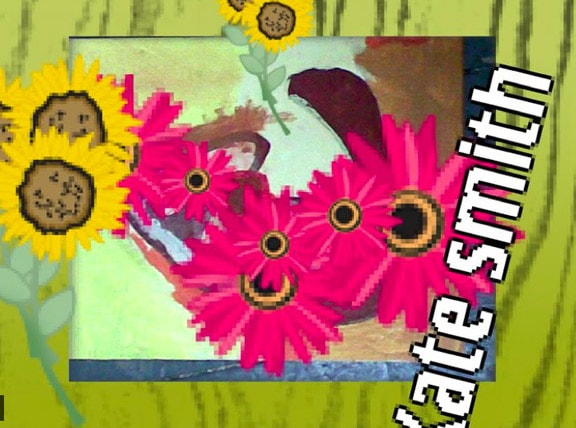exhibitions

STUDIO 12 | KATE SMITH
–
Studio 12
Kate Smith is represented by Sutton Gallery, Melbourne.
Kate Smith's Studio Artist page can be seen here.
Catalog text produced for Gertrude Contemporary and Art and Australia Emerging Writers Program -
After Kate Smith graduated from the Canberra School of Art, she went back to her family farm completed a series of paintings that she subsequently decided were terrible and stacked them vertically. 27 Fucked Paintings of the Farm captured a place of personal history and an assessment of early painting that symbolically negated the front of the canvas. It was with this balance of intuition and self-conscious consideration that a vibrant career was seeded.
I first saw Smith’s paintings in person last year. Seeing her work installed and away from the internet’s mediation of jpegs I was confused. In ‘Monkey Makes a Painting’ only three small painted canvases were propped against and hung high on the walls across the main gallery of Y3K. I had to try harder than usual to get close to read the paintings and consider the artist’s intentions by exhibiting such a small body of work. Smith experiments every time she exhibits (participating in no less than 16 shows in the last three years) approaching each installation with a new eye. A ‘presence of absence’ is evoked, collapsing the expectations we come encumbered with when viewing painting. Her work is not iconoclastic but it makes playful
turns on the venerable tradition of which it is part. Smith allows a space on her canvases for faux pas in mark-making that any novice could learn to avoid from just taking a weekend course. In her studio I am told which works should and shouldn’t be looked at. This is because the line between the beautiful and the ugly, the successes and failures of experimentation are continually being evaluated.
‘Title of Studio 12 Show’ makes a cursory nod to Abstract Expressionism – certainly the licentious influence of AbEx cannot go
unobserved. The exhibition shows a presence of the gestural body in flesh tints, plaster hands and tracings of tissue boxes. The petite size of Smith’s work addresses and tosses away the profligate habits Abstract Expression has been known to entertain. Smith conceives the messy paint work of the ‘spatter and daub’ tradition by way of a personal approach interested in ‘a new sincerity, that doesn’t lack a sense of humour’. She casually speaks of her paintings and their repetitions of imagery as ‘chatting’ to each other. And this chatter extends openly to the collaborative exhibition and studio practice she
maintains. Paintings made with friends lie around the studio. We see Trevelyan Clay’s attempt to paint like Smith, which ignites laughter and embarrassment, as the artist recounts her reaction, ‘I don’t paint that badly do I?’
The answer of course is no; aesthetic pleasure is present and one of the most convincing aspects of Smith’s work. The evidence of process is satisfying as the layers of building and also scraping back reveal labour, time spent. Colour is important – saccharine fluorescents denoting flashy tabloid magazines are smudged or overlaid with tertiary figurations. Her figures can make a ‘one time only’ appearance or stick around in wait of future paintings. Smith chooses images by following her aesthetic attractions and once the image is repeated and varied it grows an idiosyncratic meaning. In recent paintings there have been crinkly edged oval shapes painted in varying colours. Looking at these I am transported back to my first job at a supermarket in Canberra staring at a multitude of ‘On Special’ stickers. I feel mystified that this random motif, personal to my 90s youth was allowed to creep onto the canvas. In this exhibition the meaning is transformed again when the edge of the oval becomes smooth and placed in a rectangular shape in the literally titled, Tissue Box.
A commitment to paint amidst an art climate in a trans-disciplinary frenzy is a bold one. Smith’s small paintings deny the spectacle we are generally used to in contemporary art, prompting us to question the importance of absence as well as presence. In Kate Smith’s version of things, art is not asked to do more than it can, or needs to.’
MARIAN TUBB